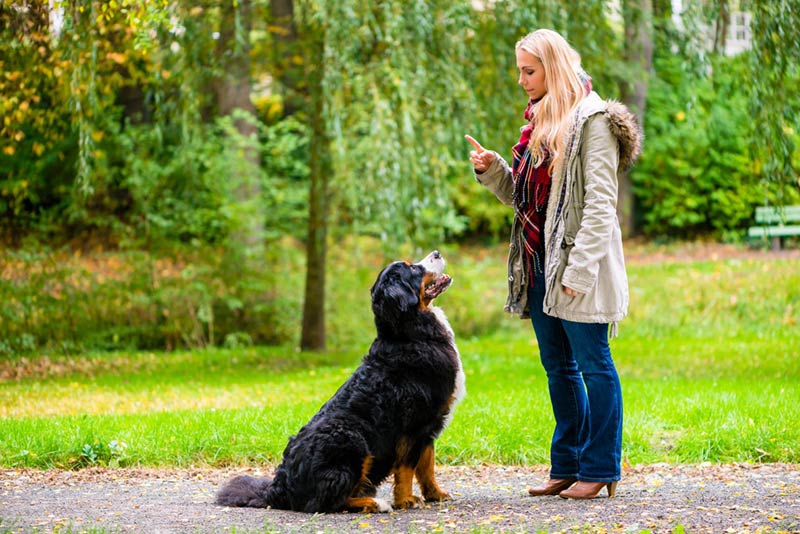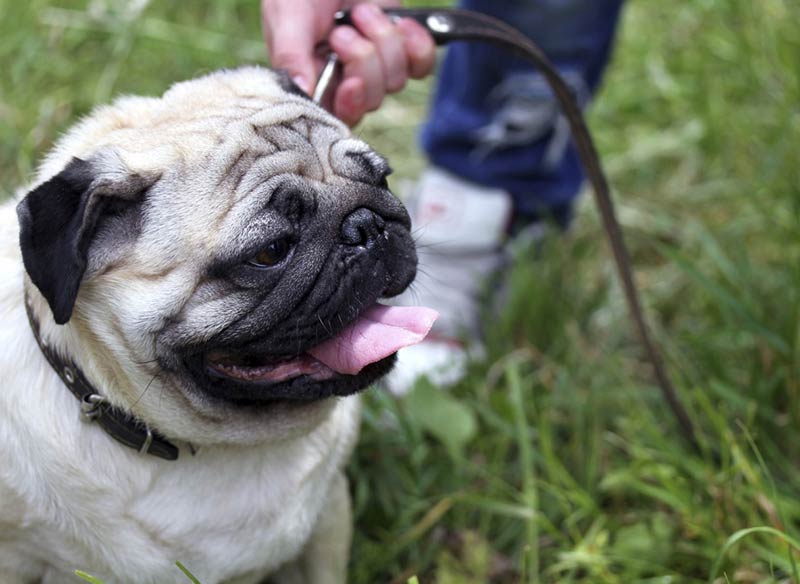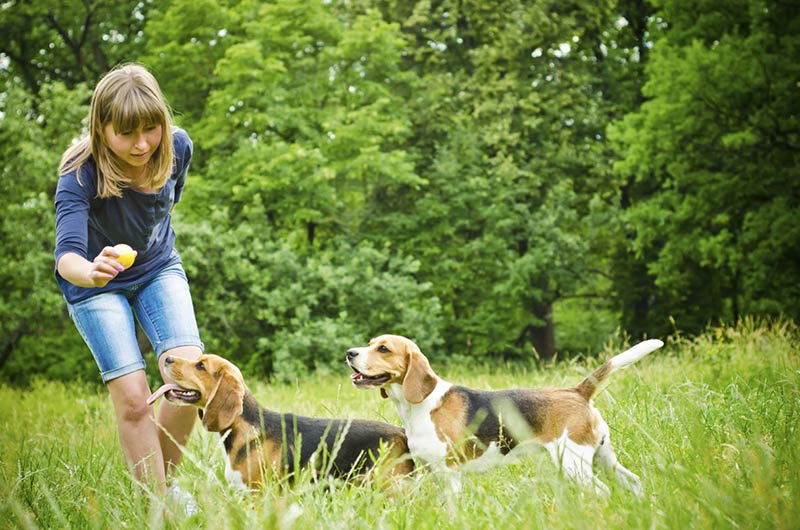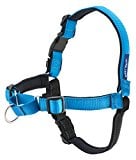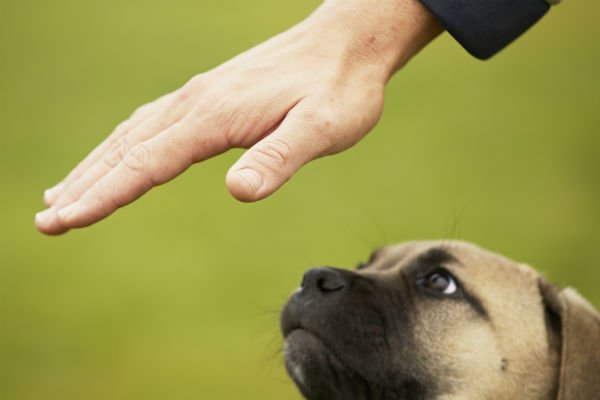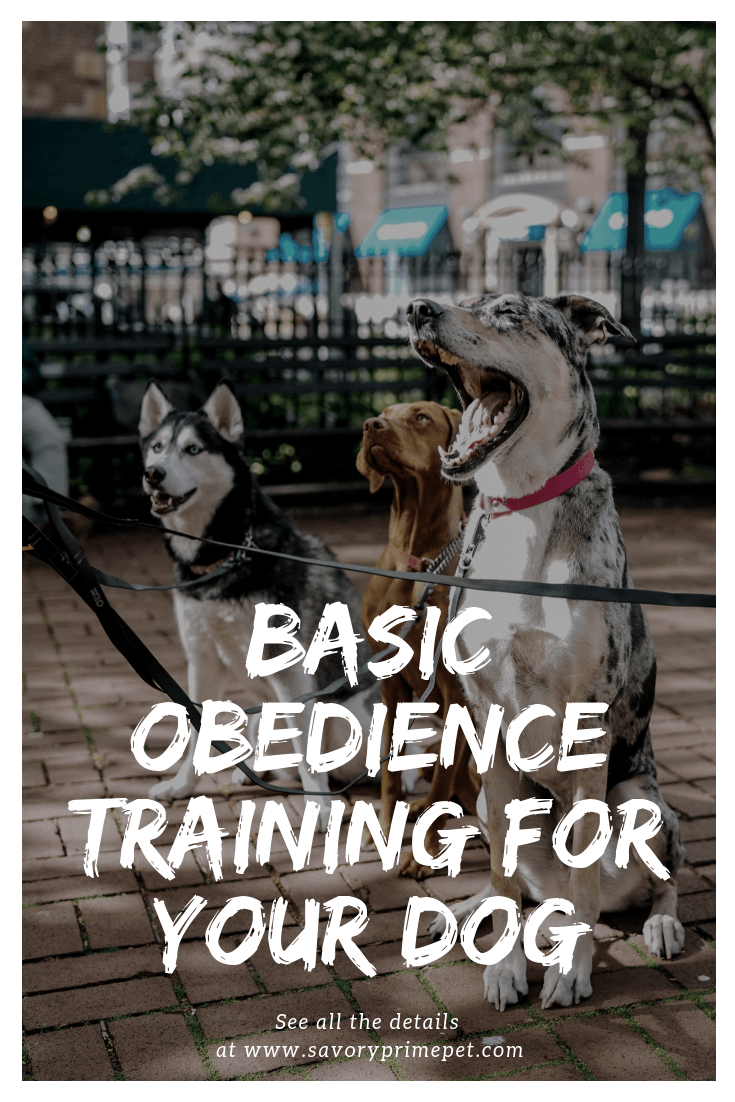Another great alternative is a head halter. This functions just like a halter on a horse, giving you control of your dog’s head and neck.
Again, physics comes into play. If your dog pulls, and you simply stop moving, he will be turned around to face you. Now you can get his attention and encourage him to come back to your side and continue walking on a loose leash.
Handling and Socialization
A good training class will do more than just teach you how to train your dog. These days, there is a lot more information available about dog behavior, socialization, and dog body language, and an effective trainer will discuss these topics in class along with the training topics at hand.
Subjects like the importance of socialization of puppies up to 16 weeks old, and reading your dog’s body language, are important topics that are now always discussed in training classes.
Another often overlooked discussion point involves handling and grooming. If your instructor offers good advice and you follow her recommendations, your veterinarian and groomer will thank you.
Practice handling and grooming your pup from the time he is very young, and your vet and groomer will have no trouble examining, treating, bathing, or clipping him. However, if the only time your dog sees nail clippers or a brush is at the vet’s or groomer’s, he will likely come to associate it with scary or unpleasant things.
If you start at home, where your dog is comfortable, you can make the vet and grooming experiences a lot more pleasant for everyone. And as a bonus, many groomers charge less for easy-to-handle dogs, because they can be groomed without the assistance of a second groomer.
Dog Behavior Problems
Even if your pup gets the best start in life, he will still likely develop some “problem” behaviors as he grows up. We put the word “problem” in quotes because most of these behaviors are natural and normal dog behaviors, but they are not welcome in the human world. Behaviors like jumping on you as a gesture of affection, nipping at your hands as an invitation to play, and sniffing you in inappropriate places are all perfectly acceptable behaviors for dogs to do to other dogs.
However, in the human world, these behaviors are not OK and are often reasons why dogs are abandoned at animal shelters. Remember your dog was born knowing only how to be a dog. If you want him to live successfully in the human world, you must first teach him what is acceptable. This is easiest done with a puppy, but older dogs can learn, too.
First, you must be consistent. If jumping on you is not OK when you’re wearing nice work slacks, then the same rules must be enforced when you’re wearing old clothes to work in the yard.
Second, it’s easiest to ignore unwanted behavior and reward an incompatible behavior. When Rover bites at your hands, he wants attention. He wasn’t born programmed to know that you want him to sit and ask nicely for attention, so you have to teach him. Instead of scolding him, ask him to sit. When he complies, reward him with a food treat, lavish praise and petting on him, or offer a game of fetch or tug.
Remember, a quiet dog is easy to ignore, but that’s the time when you should be praising him. If your dog gets your attention only when he jumps on you or bites at you, what is he going to continue to do?
Last, basic obedience training isn’t just for dogs that compete in obedience, agility, or trick competitions. Obedience exercises are important for all dogs, especially high-energy breeds that need mental stimulation as well as physical exercise. Simple behaviors like sit, down, stay, come, and leave it are essential for a well-behaved pet. You can challenge your dog even more by teaching him more advanced behaviors like “go to a place,” formal heeling, to roll over, etc. The old adage — a tired dog is a good dog — is not incorrect. However, a mentally and physically tired dog is even better.

